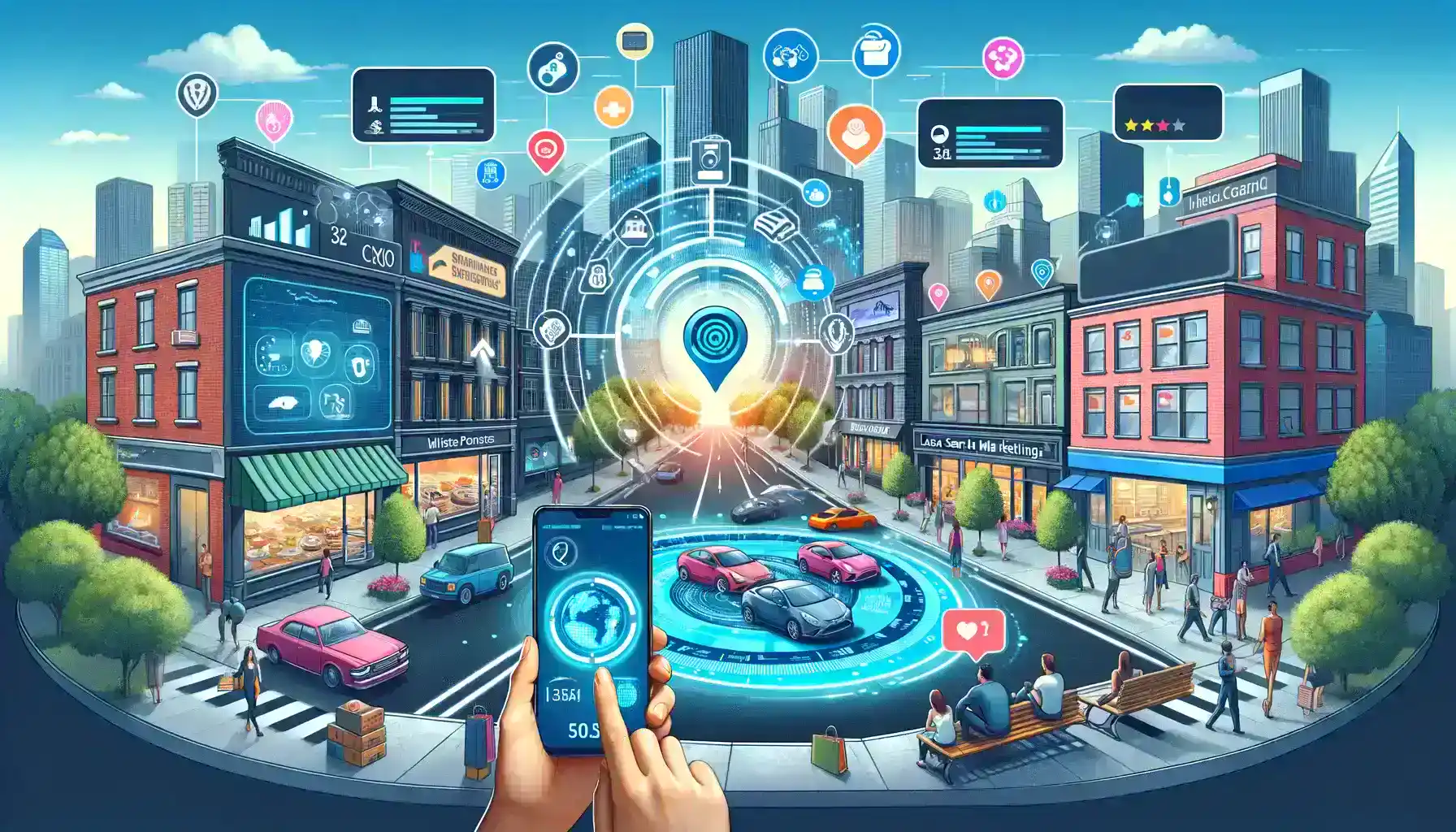Table of Contents
In the ever-evolving landscape of digital innovation, the Internet of Behaviors (IoB) stands out as a transformative concept, reshaping how we understand and interact with the digital world. At its core, IoB represents an intriguing fusion of technology, data analytics, and behavioral science.
This emerging field extends beyond the domain of the Internet of Things (IoT), delving into the intricate tapestry of data collected from a myriad of sources to not only understand but also influence human behavior in unprecedented ways.

As we navigate through the digital age, our interactions with various technologies leave behind a vast, intricate web of data. From the smartphones in our pockets to the smart devices in our homes, every digital interaction contributes to a colossal pool of information.
IoB taps into this reservoir, employing cutting-edge techniques to decode patterns and preferences embedded within this data. The goal? To create more personalized, efficient, and impactful experiences across various sectors, including marketing, healthcare, urban development, and beyond.
This comprehensive exploration into the Internet of Behaviors unveils its fascinating origins, intricate workings, and the myriad applications it offers. We delve into the benefits that IoB brings to the table, ponder the ethical considerations it raises, and gaze into what the future holds for this groundbreaking field.
As we venture into this journey, we unravel how IoB is not just about understanding behaviors but about crafting a more connected, responsive, and intuitive digital ecosystem tailored to the unique contours of human behavior.
Understanding The Internet of Behaviors (IoB)
The Internet of Behaviors (IOB) represents a convergence of technology, data analytics, and behavioral science. It’s an extension of the Internet of Things (IoT), focusing on using data collected from various sources to influence behavior. With the increasing interconnectivity of devices and the vast amount of data generated, IoB aims to understand and predict consumer behaviors, enabling more personalized and effective interactions.
IoB platforms can collect, aggregate, and analyze data from various sources to identify trends that marketing and sales teams can use to influence consumer behavior. This data can be sourced from digital devices in the household, wearables, online interactions, and a variety of other human activities.
Once the data has been examined, marketing and customer outreach can be tailored on a granular level. Who said hyper-personalization was only a dream?
Evolution And Origins Of the Internet of Behaviors
Since the 1980s, businesses have utilized Customer Relationship Management (CRM) systems, thanks to pioneers Robert and Kate Kestnbaum’s database marketing concept, to gather and analyze customer data, enhancing buyer understanding and experiences. Initially, offline, the vision for an online customer data network emerged alongside the advent of the ‘Internet of Things’, coined in 1999 by Kevin Ashton at Procter & Gamble.
In a significant evolution, Göte Nymanof, a psychology professor at the University of Helsinki, introduced the term Internet of Behaviors (IOB) in 2021. Recognized by Gartner as a top trend, IoB revolutionized tracking and understanding human behavior with remarkable precision. With technological advancements like 5G, IoB offers real-time insights, surpassing traditional customer data analytics in effectiveness. Let’s explore how this groundbreaking technology operates.
The IoB’s roots can be traced back to the early days of the internet and the emergence of IoT. As technology evolved, the ability to collect and analyze vast amounts of data led to the birth of IoB. It integrates data from online activities, GPS tracking, social media, and other sources, offering a comprehensive view of individual behavior patterns.
How Does The Internet Of Behaviors Work
IoB works by collecting data from various sources, such as smart devices, online platforms, and environmental sensors. This data is then analyzed using advanced algorithms and machine-learning techniques to identify patterns and predict behaviors. By understanding these patterns, organizations can tailor their strategies and interactions to individual preferences and behaviors.
The Internet of Behaviors (IoB) leverages IoT devices to gather comprehensive customer data, including surface-level information from sensors and online activities, as well as deeper insights from transactions, geo-tags, browser histories, and social media. This extensive data collection reflects individuals’ behaviors both online and offline.
By processing this data, IoB helps in understanding personal preferences and behaviors, enabling businesses to tailor experiences uniquely.
For instance, recognizing a customer’s regular restaurant visits, IoB can assist in offering customized loyalty rewards, enhancing engagement, loyalty, sales, and brand recognition.
What Are The Applications of IoB

Various businesses can harness the potential of the Internet of Behaviors to elevate their customer analytics to new heights.
Finance and Insurance
In the finance and insurance sectors, IoB systems are revolutionizing decision-making by adapting credit scores and interest rates based on individual behaviors. Insurance companies, for instance, utilize IoB to track driving patterns, offering reduced rates to those demonstrating safer driving. #SmartFinanceSolutions
E-commerce
In the realm of e-commerce, IoB plays a crucial role in understanding customer preferences by aggregating data from diverse sources. This enables e-commerce businesses to tailor the shopping experience, focusing on the factors that influence customer interest and purchasing decisions. #TailoredShoppingJourney
Medical and Healthcare
In healthcare, IoB is instrumental in monitoring patients’ treatment responses, lifestyle habits impacting health, and medication adherence. It facilitates prompt medical actions, like sending alerts for abnormal blood pressure readings detected by fitness trackers. #HealthcareInnovation
Local Search Marketing
IoB enhances local search marketing by using location tracking through GPS or NFC to deliver personalized notifications and offers. This technology makes it possible to receive special discounts from nearby businesses, like a bakery offering a 20% discount to those in the area. #LocalizedDealsDelight
Benefits Of The Internet of Behaviors (IoB)
Here are some prevalent ways in which businesses harness the power of the Internet of Behavior to enhance their customer service and interactions.
Strategic Marketing
Digital marketers increasingly use analytics to understand consumer behavior. With IoB, they can delve deeper, tracking client purchasing patterns across various platforms, accessing new layers of data, reshaping the value chain, and providing timely, personalized ads and notifications. For instance, they could use IoB to tailor promotions based on a user’s browsing history on different websites.
Enhanced Customer Experience
IoB’s insights enable organizations to better grasp customer views on products and services, streamlining the resolution of issues and improving satisfaction. For example, by analyzing customer feedback and interaction patterns, companies can proactively address concerns and improve product features.
Revolutionizing Health Practices
IoB is being integrated into workplace health practices through RFID tags and IoT sensors to monitor employee well-being, like ensuring regular movement breaks. In healthcare, this extends to innovative applications like rewarding patients with incentives for healthy behaviors, such as offering discounts on health insurance premiums for regular gym attendance. #HealthThroughIoB
Public Safety and Well-being
IoB’s potential to enhance public safety is immense. It’s being used to monitor driving habits via vehicle telematics to promote safer driving, with potential applications like adjusting insurance premiums based on driving data. Additionally, smart city initiatives could use IoB to analyze pedestrian traffic patterns to improve urban planning and safety measures.
Challenges and Concerns Around the IoB
Challenges and concerns surrounding the Internet of Behaviors (IoB) are critical considerations as this technology continues to evolve and shape our digital landscape. Here are some of the key challenges and concerns associated with IoB:

Privacy Concerns: IoB involves extensive data collection from various sources, including personal devices and online activities. This raises significant privacy concerns as individuals may feel that their data is being constantly monitored and analyzed without their consent. Striking a balance between data collection and privacy protection is a challenge.
Data Security: The vast amount of data generated and transmitted in IoB systems creates potential security vulnerabilities. Safeguarding this data from cyberattacks and breaches is a significant concern, especially when it includes sensitive information like health records or financial data.
Data Ownership: Determining who owns the data collected through IoB systems can be contentious. Is it the individual, the organization collecting the data, or a combination of both? Clarifying data ownership rights is an ongoing concern.
Overreliance on Technology: Depending too heavily on IoB data and algorithms to make decisions can lead to a loss of human judgment and intuition, potentially limiting creativity and innovation.
Access and Inclusivity: Ensuring that IoB technologies are accessible and inclusive to all demographics and avoiding bias in algorithms is a challenge for creating fair and equitable systems.
Resistance to Change: Individuals and organizations may resist the adoption of IoB due to concerns about privacy, security, or a fear of losing control over their data and behavior.
What’s The Future Of Internet of Behaviors
Personalized engagement is poised to shape the future of customer interactions. IoB is set to rejuvenate applications like precision-targeted advertising, tailored notifications, customized reminders, and individualized healthcare solutions. According to Gartner, as IoT devices and sensors continue to proliferate, nearly 3 billion individuals will soon experience IoB in various forms! #EmbraceTheFuture
The forthcoming landscape of service excellence, personalization, behavioral insights, and marketing strategies will be significantly influenced by this transformative technology. IoB will become the go-to tool for companies seeking a deeper understanding of their customers’ intentions, preferences, and behaviors. While still in its early stages, the full potential of IoB is eagerly anticipated!
Conclusion
The Internet of Behaviors is a groundbreaking concept that leverages the power of data to understand and influence human behavior. Its potential to transform various industries is immense, provided ethical and privacy concerns are properly managed. As technology continues to evolve, the scope and impact of IoB are expected to expand, offering exciting possibilities for the future.
The Internet of Behaviors stands out as a leading application of IoT, empowering organizations to gain profound insights into individuals’ needs and hurdles. This knowledge fuels the creation of seamless and tailored experiences and interactions. However, in utilizing the Internet of Behaviors, businesses face the crucial task of finding the right equilibrium between personalization strategies and respecting the boundaries of personal data. With this newfound understanding of IoB, you can impress your friends and family with your insights.